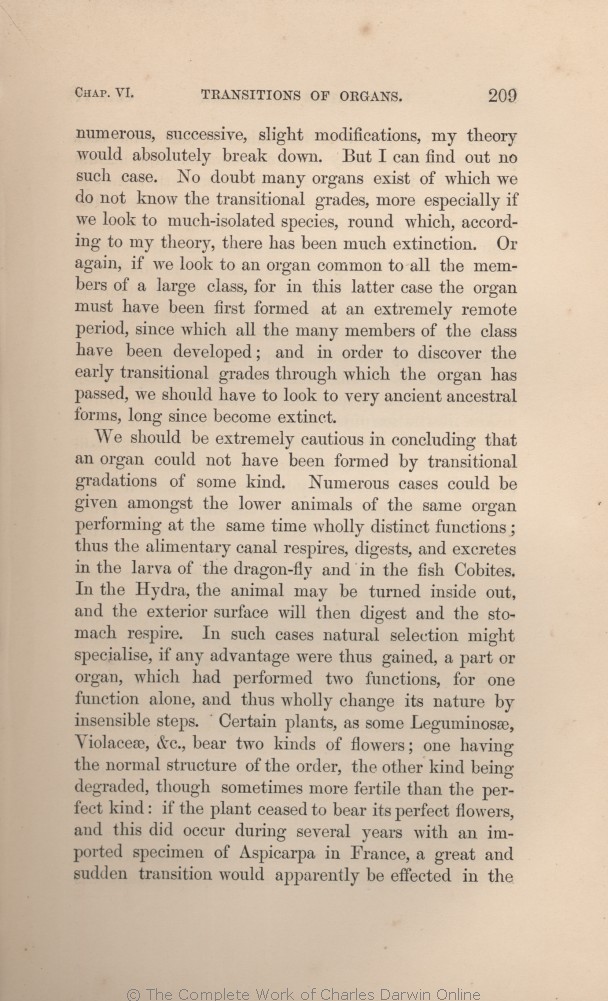numerous, successive, slight modifications, my theory would absolutely break down. But I can find out no such case. No doubt many organs exist of which we do not know the transitional grades, more especially if we look to much-isolated species, round which, according to
my | my 1859 1860 1861 1866 | | the 1869 1872 |
| look to 1859 1860 1861 1866 | | take 1869 1872 |
| large 1859 1860 1861 1866 1869 | large 1872 |
| first 1859 1860 1861 | | originally 1866 1869 1872 |
| an extremely 1859 1860 1861 1866 1869 | | a 1872 |
|
|
We should be extremely cautious in concluding that an organ could not have been formed by transitional gradations of some kind. Numerous cases could be given amongst the lower animals of the same organ performing at the same time wholly distinct functions; thus
the alimentary canal respires, digests, and excretes | the alimentary canal respires, digests, and excretes 1859 1860 1861 1866 1869 |
| OMIT 1872 |
| Cobites. 1859 1860 1861 1866 1869 |
| Cobites the alimentary canal respires, digests, and excretes. 1872 |
| ..... 1861 1866 1869 1872 | | easily 1859 1860 |
| a part or 1859 1860 1861 |
| the whole or part of an 1866 1869 1872 |
| performed 1859 1860 1861 1866 | | previously performed 1869 1872 |
| wholly change its nature 1859 1860 1861 |
| greatly change its nature 1866 |
| OMIT 1869 1872 |
| steps. 1859 1860 1861 1866 |
| steps greatly change its nature. 1869 1872 |
|









